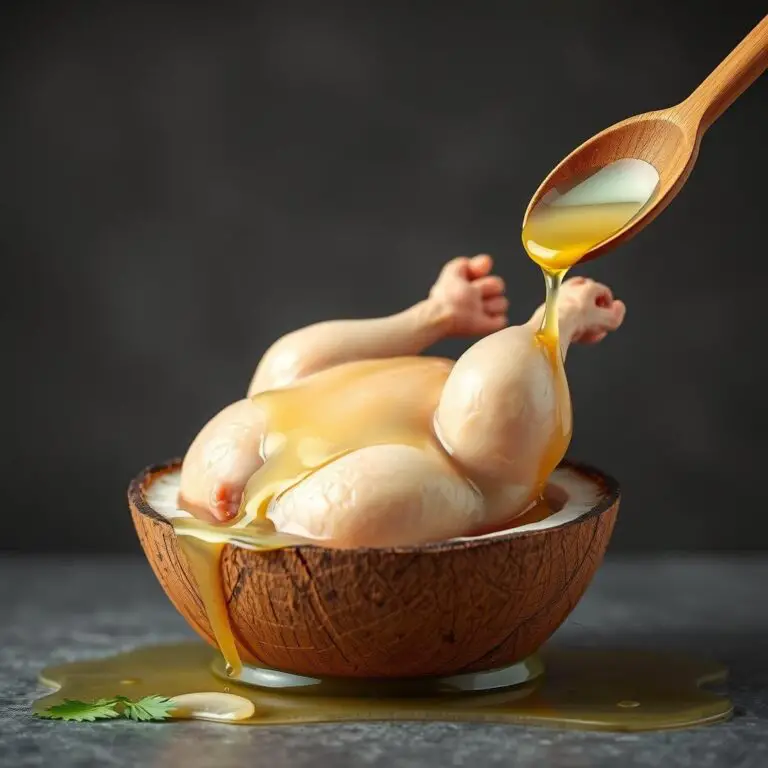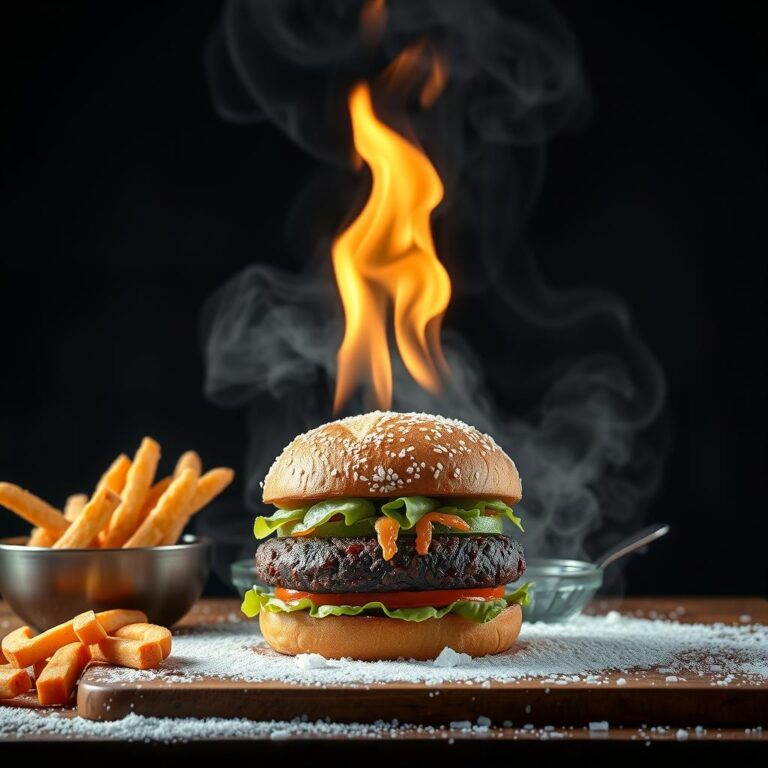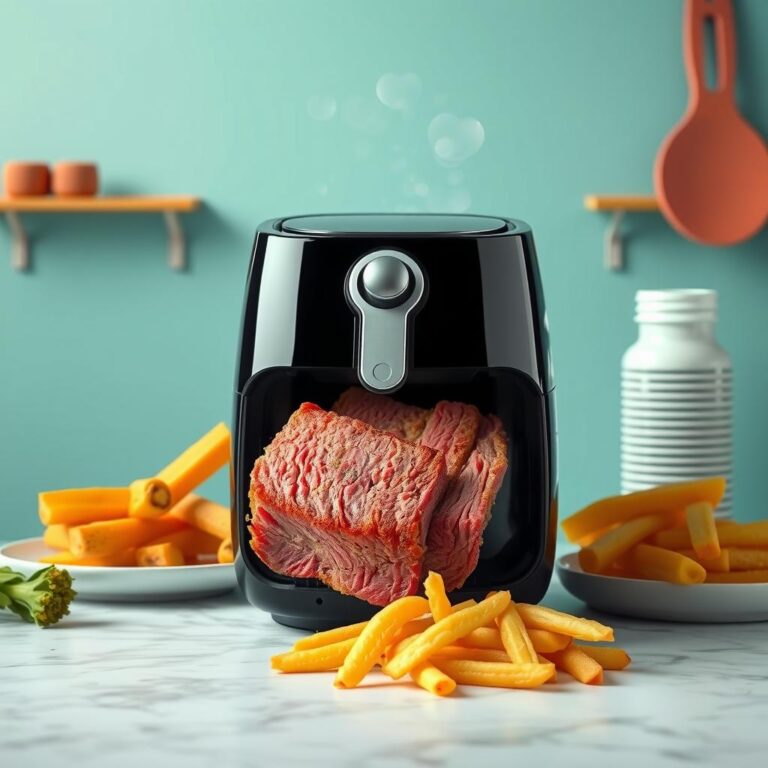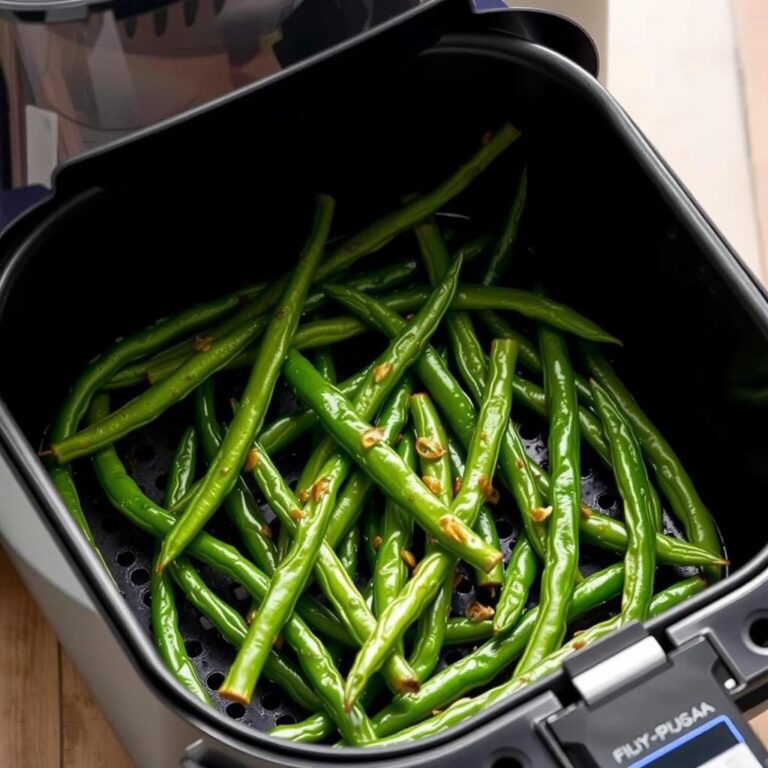Can you cook chicken on cast iron?
That's the question on your mind, right?
I get it, because I've been there too.
Wondering if that beautiful, heavy cast iron skillet is the right tool for the job when you're craving perfectly cooked chicken.
Let's dive right into this.
Why Cast Iron and Chicken Are a Match Made in Culinary Heaven
Cooking chicken in cast iron isn't just possible; it's often the best way to get that crispy skin and juicy interior we all crave.
The key is understanding what makes cast iron so special.
- Heat Retention: Cast iron holds heat like a champ, so when you slap that cold chicken breast into the pan, the temperature doesn't plummet. This means even cooking and a killer sear.
- Even Heat Distribution: Forget hot spots! Cast iron distributes heat evenly, minimizing the risk of some parts of your chicken being overcooked while others are still raw.
- Versatility: You can take your cast iron skillet from the stovetop to the oven without missing a beat. This is crucial for recipes that require searing and then baking, which is a fantastic method for cooking chicken.
These points mean you can reliably cook delicious chicken on cast iron, every single time.
Choosing Your Cast Iron Champion: Skillet Size Matters
Not all cast iron skillets are created equal.
The size of your skillet matters, especially when cooking chicken.
Here’s the lowdown:
- Small Skillet (8-10 inches): Perfect for cooking one or two chicken breasts. Avoid overcrowding, as this will lower the pan's temperature and lead to steamed, not seared, chicken.
- Medium Skillet (10-12 inches): Ideal for a family of three to four. You can comfortably fit several chicken pieces without overcrowding.
- Large Skillet (12+ inches): Bring on the whole chicken! Large skillets can handle a spatchcocked chicken or multiple bone-in chicken thighs.
I prefer a 12-inch skillet for most of my chicken cooking needs, giving me enough space to work without feeling cramped.
Make sure that cast iron skillet is well-seasoned.
Prepping for Success: Seasoning Your Cast Iron and the Chicken
Before you even think about turning on the heat, let's talk prep.
This step is crucial for juicy chicken cooked on cast iron.
Seasoning Your Cast Iron:
A well-seasoned cast iron skillet is a non-stick dream.
If your skillet is new, follow the manufacturer's instructions for initial seasoning.
For regular maintenance:
- After each use, wash your skillet with hot water and a non-abrasive sponge.
- Dry it thoroughly.
- Place it on the stovetop over low heat to ensure it's completely dry.
- Add a teaspoon of oil (vegetable, canola, or grapeseed work well) and rub it into the surface with a paper towel.
- Heat until it just starts to smoke then let it cool.
- Wipe away any excess oil.
Prepping Your Chicken:
- Pat it Dry: This is non-negotiable. Excess moisture prevents proper searing. Use paper towels to thoroughly dry the chicken skin.
- Season Generously: Don't be shy! Season your chicken liberally with salt, pepper, and any other spices you love. Garlic powder, onion powder, paprika, and herbs like thyme and rosemary are all excellent choices.
- Bring to Room Temperature: Let the chicken sit at room temperature for about 20-30 minutes before cooking. This helps it cook more evenly.
These preperation steps help ensure you can cook chicken on cast iron skillet successfully.
Temperature Control: The Secret Weapon for Perfect Chicken on Cast Iron
Mastering temperature control is paramount to mastering cooking chicken on cast iron.
Here’s what you need to know:
- Preheat Your Skillet: This is key! Place your cast iron skillet over medium-high heat and let it preheat for at least 5-10 minutes. You want it hot enough to create a beautiful sear but not so hot that it burns the chicken.
- Use an Instant-Read Thermometer: Don’t rely on guesswork. An instant-read thermometer is your best friend when cooking chicken. Insert it into the thickest part of the chicken to ensure it reaches an internal temperature of 165°F (74°C).
- Adjust the Heat: Depending on your stovetop and the thickness of the chicken, you may need to adjust the heat during cooking. If the chicken is browning too quickly, reduce the heat to medium. If it’s not browning enough, increase the heat slightly.
I can't stress this enough: temperature control is everything. It helps you cook chicken on cast iron with consistent results.
Searing Like a Pro: Achieving That Golden-Brown Crust
The sear is where the magic happens.
That beautiful, golden-brown crust is what separates good chicken from amazing chicken.
- Add Oil: Once your skillet is preheated, add a tablespoon or two of oil with a high smoke point, like avocado oil, canola oil, or refined coconut oil.
- Don’t Overcrowd: As mentioned earlier, overcrowding the skillet will lower the temperature and prevent proper searing. Cook the chicken in batches if necessary.
- Let it Sear: Resist the urge to move the chicken around. Place it in the hot skillet and let it sear for 4-5 minutes per side, or until it develops a deep golden-brown crust.
- Listen to the Sizzle: The sound of the chicken sizzling in the hot oil is music to my ears. It means you're on the right track.
If you follow these steps and sear the chicken right, you'll definitely cook chicken on cast iron like a pro.
From Stovetop to Oven: A Game-Changing Technique
One of the best things about cooking chicken in cast iron is the ability to seamlessly transition from the stovetop to the oven.
This technique is perfect for thicker cuts of chicken that need a little extra help cooking through.
- Sear First: Start by searing the chicken on the stovetop as described above. This will give you that beautiful crust.
- Transfer to Oven: Place the entire skillet in a preheated oven at 375°F (190°C).
- Bake to Perfection: Bake for 15-20 minutes, or until the chicken reaches an internal temperature of 165°F (74°C).
- Rest: Remove the skillet from the oven and let the chicken rest for 5-10 minutes before slicing and serving. This allows the juices to redistribute, resulting in a more tender and flavorful bird.
This method is my go-to when I want to cook chicken on cast iron with juicy results every time.
Cleaning Up: Maintaining Your Cast Iron for Longevity
Proper maintenance is key to keeping your cast iron skillet in tip-top shape.
- Clean Immediately: Don't let food sit in your cast iron skillet for too long. Clean it as soon as possible after cooking.
- Use Hot Water and a Non-Abrasive Sponge: Avoid using harsh soaps or abrasive scrubbers, as they can damage the seasoning.
- Dry Thoroughly: As mentioned earlier, moisture is the enemy of cast iron. Dry your skillet thoroughly after washing.
- Re-Season if Necessary: If you notice any rust or the seasoning is looking thin, re-season your skillet as described above.
With a little care, your cast iron skillet will last for generations, allowing you to cook chicken on cast iron for years to come.
Can you cook chicken on cast iron?
That's the question on your mind, right?
I get it, because I've been there too.
Wondering if that beautiful, heavy cast iron skillet is the right tool for the job when you're craving perfectly cooked chicken.
Let's dive right into this.
Why Cast Iron and Chicken Are a Match Made in Culinary Heaven
Cooking chicken in cast iron isn't just possible; it's often the best way to get that crispy skin and juicy interior we all crave.
The key is understanding what makes cast iron so special.
- Heat Retention: Cast iron holds heat like a champ, so when you slap that cold chicken breast into the pan, the temperature doesn't plummet. This means even cooking and a killer sear.
- Even Heat Distribution: Forget hot spots! Cast iron distributes heat evenly, minimizing the risk of some parts of your chicken being overcooked while others are still raw.
- Versatility: You can take your cast iron skillet from the stovetop to the oven without missing a beat. This is crucial for recipes that require searing and then baking, which is a fantastic method for cooking chicken.
These points mean you can reliably cook delicious chicken on cast iron, every single time.
Choosing Your Cast Iron Champion: Skillet Size Matters
Not all cast iron skillets are created equal.
The size of your skillet matters, especially when cooking chicken.
Here’s the lowdown:
- Small Skillet (8-10 inches): Perfect for cooking one or two chicken breasts. Avoid overcrowding, as this will lower the pan's temperature and lead to steamed, not seared, chicken.
- Medium Skillet (10-12 inches): Ideal for a family of three to four. You can comfortably fit several chicken pieces without overcrowding.
- Large Skillet (12+ inches): Bring on the whole chicken! Large skillets can handle a spatchcocked chicken or multiple bone-in chicken thighs.
I prefer a 12-inch skillet for most of my chicken cooking needs, giving me enough space to work without feeling cramped.
Make sure that cast iron skillet is well-seasoned.
Prepping for Success: Seasoning Your Cast Iron and the Chicken
Before you even think about turning on the heat, let's talk prep.
This step is crucial for juicy chicken cooked on cast iron.
Seasoning Your Cast Iron:
A well-seasoned cast iron skillet is a non-stick dream.
If your skillet is new, follow the manufacturer's instructions for initial seasoning.
For regular maintenance:
- After each use, wash your skillet with hot water and a non-abrasive sponge.
- Dry it thoroughly.
- Place it on the stovetop over low heat to ensure it's completely dry.
- Add a teaspoon of oil (vegetable, canola, or grapeseed work well) and rub it into the surface with a paper towel.
- Heat until it just starts to smoke then let it cool.
- Wipe away any excess oil.
Prepping Your Chicken:
- Pat it Dry: This is non-negotiable. Excess moisture prevents proper searing. Use paper towels to thoroughly dry the chicken skin.
- Season Generously: Don't be shy! Season your chicken liberally with salt, pepper, and any other spices you love. Garlic powder, onion powder, paprika, and herbs like thyme and rosemary are all excellent choices.
- Bring to Room Temperature: Let the chicken sit at room temperature for about 20-30 minutes before cooking. This helps it cook more evenly.
These preperation steps help ensure you can cook chicken on cast iron skillet successfully.
Temperature Control: The Secret Weapon for Perfect Chicken on Cast Iron
Mastering temperature control is paramount to mastering cooking chicken on cast iron.
Here’s what you need to know:
- Preheat Your Skillet: This is key! Place your cast iron skillet over medium-high heat and let it preheat for at least 5-10 minutes. You want it hot enough to create a beautiful sear but not so hot that it burns the chicken.
- Use an Instant-Read Thermometer: Don’t rely on guesswork. An instant-read thermometer is your best friend when cooking chicken. Insert it into the thickest part of the chicken to ensure it reaches an internal temperature of 165°F (74°C).
- Adjust the Heat: Depending on your stovetop and the thickness of the chicken, you may need to adjust the heat during cooking. If the chicken is browning too quickly, reduce the heat to medium. If it’s not browning enough, increase the heat slightly.
I can't stress this enough: temperature control is everything. It helps you cook chicken on cast iron with consistent results.
Searing Like a Pro: Achieving That Golden-Brown Crust
The sear is where the magic happens.
That beautiful, golden-brown crust is what separates good chicken from amazing chicken.
- Add Oil: Once your skillet is preheated, add a tablespoon or two of oil with a high smoke point, like avocado oil, canola oil, or refined coconut oil.
- Don’t Overcrowd: As mentioned earlier, overcrowding the skillet will lower the temperature and prevent proper searing. Cook the chicken in batches if necessary.
- Let it Sear: Resist the urge to move the chicken around. Place it in the hot skillet and let it sear for 4-5 minutes per side, or until it develops a deep golden-brown crust.
- Listen to the Sizzle: The sound of the chicken sizzling in the hot oil is music to my ears. It means you're on the right track.
If you follow these steps and sear the chicken right, you'll definitely cook chicken on cast iron like a pro.
From Stovetop to Oven: A Game-Changing Technique
One of the best things about cooking chicken in cast iron is the ability to seamlessly transition from the stovetop to the oven.
This technique is perfect for thicker cuts of chicken that need a little extra help cooking through.
- Sear First: Start by searing the chicken on the stovetop as described above. This will give you that beautiful crust.
- Transfer to Oven: Place the entire skillet in a preheated oven at 375°F (190°C).
- Bake to Perfection: Bake for 15-20 minutes, or until the chicken reaches an internal temperature of 165°F (74°C).
- Rest: Remove the skillet from the oven and let the chicken rest for 5-10 minutes before slicing and serving. This allows the juices to redistribute, resulting in a more tender and flavorful bird.
This method is my go-to when I want to cook chicken on cast iron with juicy results every time.
Cleaning Up: Maintaining Your Cast Iron for Longevity
Proper maintenance is key to keeping your cast iron skillet in tip-top shape.
- Clean Immediately: Don't let food sit in your cast iron skillet for too long. Clean it as soon as possible after cooking.
- Use Hot Water and a Non-Abrasive Sponge: Avoid using harsh soaps or abrasive scrubbers, as they can damage the seasoning.
- Dry Thoroughly: As mentioned earlier, moisture is the enemy of cast iron. Dry your skillet thoroughly after washing.
- Re-Season if Necessary: If you notice any rust or the seasoning is looking thin, re-season your skillet as described above.
With a little care, your cast iron skillet will last for generations, allowing you to cook chicken on cast iron for years to come.
Spice It Up: Flavor Combinations for Cast Iron Chicken
Alright, so you know how to cook chicken in cast iron, but what about the what?
Let's talk flavor.
Cooking chicken in a cast iron skillet gives you the perfect opportunity to experiment with different herbs, spices, and marinades.
Mediterranean Magic:
Think lemon, garlic, oregano, and a drizzle of olive oil.
This combo works wonders on chicken breasts or thighs.
I like to marinate the chicken for at least 30 minutes before cooking to really let the flavors meld.
Spicy Southwest:
Chili powder, cumin, smoked paprika, and a pinch of cayenne pepper.
This blend adds a kick to your cast iron chicken, giving it a smoky and slightly spicy flavor.
Perfect for tacos, salads, or just enjoying on its own.
Garlic Herb Butter:
This is a classic for a reason.
Melt some butter in your cast iron skillet, add minced garlic, thyme, rosemary, and a squeeze of lemon juice.
Sear the chicken in this flavorful butter until golden brown and cooked through.
Honey Mustard Glaze:
Combine honey, Dijon mustard, soy sauce, and a touch of garlic for a sweet and savory glaze.
Brush the glaze onto the chicken during the last few minutes of cooking to create a sticky, delicious coating.
Experiment, and find your go to recipe to cook chicken on cast iron.
Chicken Cuts and Cast Iron: What Works Best?
Not all chicken cuts are created equal when it comes to cooking in a cast iron skillet.
Some cuts lend themselves better to the high heat and searing capabilities of cast iron.
Bone-In, Skin-On Chicken Thighs:
These are my personal favorite.
The bone adds flavor, and the skin gets incredibly crispy in the cast iron skillet.
They're also relatively forgiving, so they're less likely to dry out.
Chicken Breasts:
Definitely doable, but you need to be careful not to overcook them.
Pounding them to an even thickness helps them cook more evenly, ensuring you can cook chicken on cast iron without drying out the chicken breasts.
Chicken Wings:
Cast iron is fantastic for getting crispy chicken wings.
Toss the wings in your favorite sauce after cooking, or bake them in the oven after a quick sear.
Spatchcock Chicken:
Removing the backbone and flattening the chicken allows it to cook more evenly and quickly in the cast iron skillet.
This is a great option for a whole chicken.
No matter the cut, the goal is to cook chicken on cast iron till perfection.
Troubleshooting Common Problems When Cooking Chicken on Cast Iron
Even with the best intentions, things can sometimes go wrong.
Here are some common problems and how to fix them:
Chicken Sticking to the Skillet:
This usually happens if the skillet isn't hot enough or if it's not properly seasoned.
Make sure your skillet is preheated and well-seasoned.
Also, don't move the chicken around too much.
Let it sear and naturally release from the skillet.
Uneven Cooking:
Uneven cooking can be caused by hot spots in your skillet or by not bringing the chicken to room temperature before cooking.
Make sure your skillet is preheated evenly and let the chicken sit at room temperature for about 20-30 minutes before cooking.
Dry Chicken:
Overcooking is the main culprit here.
Use an instant-read thermometer to ensure the chicken reaches an internal temperature of 165°F (74°C), and don't cook it any longer than necessary.
Resting the chicken before slicing also helps to retain moisture.
Burnt Skin:
If the skin is burning before the chicken is cooked through, reduce the heat.
You can also try tenting the skillet with foil to deflect some of the heat.
Temperature control is key if you cook chicken on cast iron.
Elevate Your Meal: Side Dishes That Pair Perfectly with Cast Iron Chicken
You've got the perfect cast iron chicken, now what?
Here are a few side dishes that will take your meal to the next level:
- Roasted Vegetables: Toss vegetables like broccoli, carrots, and bell peppers with olive oil, salt, and pepper, and roast them in the oven alongside your chicken.
- Mashed Potatoes: Creamy mashed potatoes are a classic pairing with chicken.
- Quinoa Salad: A quinoa salad with fresh herbs, vegetables, and a light vinaigrette is a healthy and delicious option.
- Garlic Bread: Crispy garlic bread is always a crowd-pleaser.
Side dishes makes it complete meal when you cook chicken on cast iron.
FAQs About Cooking Chicken on Cast Iron
Can I use soap to clean my cast iron skillet after cooking chicken?
Avoid using harsh soaps, but a little mild soap is okay if necessary.
Just make sure to rinse and dry the skillet thoroughly and re-season it if needed.
Do I need to use a lot of oil when cooking chicken in cast iron?
You need enough oil to prevent sticking and promote searing, but you don't need to drown the chicken in oil.
A tablespoon or two is usually sufficient.
How do I know when my cast iron skillet is hot enough to cook chicken?
A good way to test is to flick a few drops of water into the skillet.
If the water sizzles and evaporates quickly, the skillet is hot enough.
Can I cook frozen chicken in a cast iron skillet?
It's best to thaw the chicken completely before cooking it in a cast iron skillet.
Cooking frozen chicken can result in uneven cooking and a less-than-desirable texture.
What type of oil is best for cooking chicken in cast iron?
Oils with a high smoke point, such as avocado oil, canola oil, or refined coconut oil, are best for cooking chicken in cast iron.
Alright, that's the lowdown on cooking chicken on cast iron.
With the right skillet, a little practice, and these tips, you'll be whipping up restaurant-quality chicken in no time.
So go on, grab your cast iron, and let's get cooking!
Now you know the secret on can you cook chicken on cast iron.
“`json
“`





